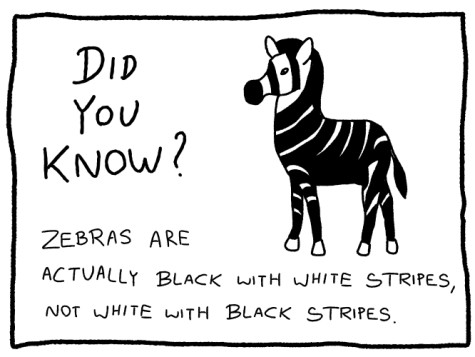 There are two ways of reading, according to my local primary school teachers. You can sound out the words or you can just look at the pictures and infer a story. Of course, this position encourages exposure to text for non-readers, but the idea pervades adult culture too. Scanning photos and skimming headlines passes for reading the paper.
There are two ways of reading, according to my local primary school teachers. You can sound out the words or you can just look at the pictures and infer a story. Of course, this position encourages exposure to text for non-readers, but the idea pervades adult culture too. Scanning photos and skimming headlines passes for reading the paper.
I dispute it. A picture may tell a thousand words, but those words will be a limited subset of the language, not representative of what words can do. In recent years, talented graphic designers and video editors have made spectacular multimedia pieces possible. But in many cases, more viscerally stimulating media desensitize the reader from his task of immersing himself in the writing and creating the pictures in his own mind.
I take issue, in particular, with media that include words – including captioned photos. As a long-form writer, my turf includes everywhere any words appear. I spend a lot of time arranging the order in which the reader receives various strands of information. I place each idea within a layered crescendo. At least, that’s what I’m going for. So when it comes time for the story to come online, and the layout professionals decide, for example, to add some kind of movie trailer that summarizes a later element of my story, I get stroppy.
The more visual elements you add to a piece, the less likely the text is to be read and deeply considered. But it’s not just pictures and video that activate the stimulation-seeking circuits of our audiences. Quick-hit statistics and trivial, point-form items – amuse-bouches for the brain, set apart from the text – are also an invitation to superficial skimming. Imagine, for example, that Harper’s magazine distributed their opening “Harper’s Index” items across the book, one fact per page. Tell me you’ve never flipped through the New Yorker and read only the cartoons.
I used to work for a guy who couldn’t get enough factoids. “Open each section with a factoid box,” he would say. “The picture and the factoid are what’s going to draw them in.” Of course, the picture and factoid were all most people ended up looking at. Eventually it was pointed out that according to Norman Mailer’s coined use of the term, a factoid is a ‘spurious, unverified, false or fabricated statement, presented as fact but without supporting evidence.’ The boss stopped using that term, but the instructions never changed.
But then, last week, my opinions were challenged. I finally got around to reading Adam Rutherford’s excellent double book, Creation, which describes research on the twin subjects of life’s origins and synthetic biology. As is my habit, I took notes. I followed with fascination the main thrust of the content, and I retained that knowledge, but when I finished and looked over my notes, they were all quirky little facts:
- Darwin had terrible handwriting
- Each day, you make and use your own body weight in ATP
- Cheerios self-assemble to form a hexagonal pattern in order more evenly to distribute the upward force from the milk
- At 18 billion km from Earth, Voyager 1 is the most distant man-made object
- Adam Rutherford is no relation to Ernest Rutherford
So what was the difference between these tidbits and the kind that routinely pull readers away from the central, more nuanced arguments and the larger narratives? I think it was the fact that they are hidden in the text. You have to read the whole thing, and every couple of pages, you stumble upon a gem that wakes you up and keeps you searching. All that is gold should not glitter.
Image: Shutterstock